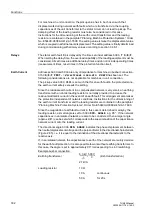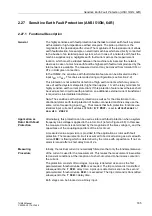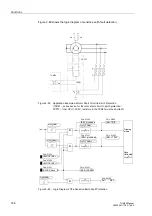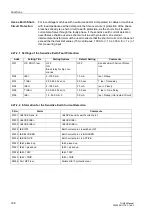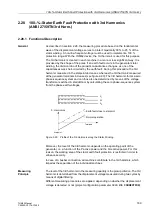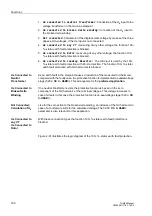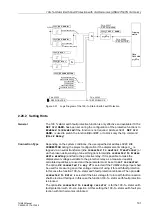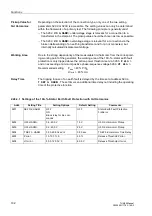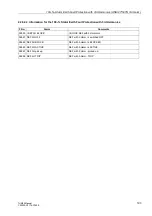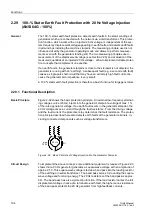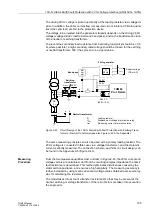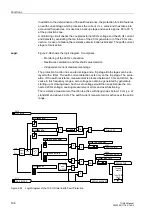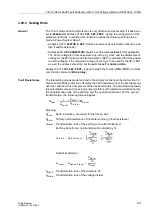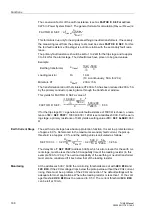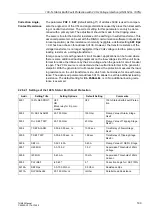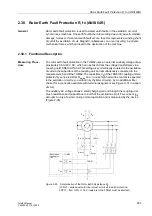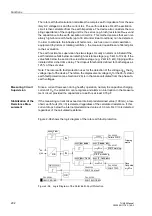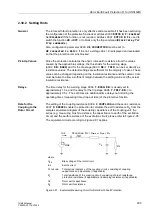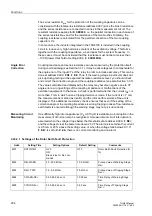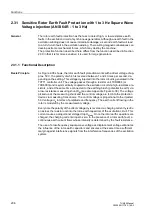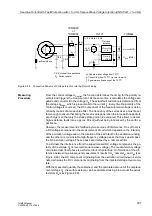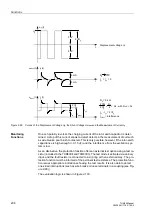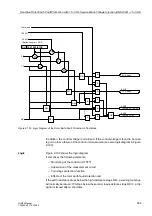
Functions
194
7UM62 Manual
C53000-G1176-C149-3
2.29
100–% Stator Earth Fault Protection with 20 Hz Voltage Injection
(ANSI 64G - 100%)
General
The 100-% stator earth fault protection detects earth faults in the stator windings of
generators which are connected with the network via a unit transformer. This protec-
tion function, which works with an injected 20 Hz voltage, is independent of the sys-
tem-frequency displacement voltage appearing in earth faults, and detects earth faults
in all windings including the machine starpoint. The measuring principle used is not
influenced at all by the generator operating mode and allows to perform measure-
ments even with the generator standing still. The two measuring principles used –
measurement of the displacement voltage (see Section 2.26) and evaluation of the
measured quantities at an injected 20 Hz voltage – allow to implement reliable protec-
tion concepts that complement one another.
If an earth fault in the generator starpoint or close to the starpoint is not detected, the
generator is running with an “earthing”. A subsequent fault (e.g. a second earth fault)
causes a single-pole short-circuit that may have an extremely high fault current be-
cause the generator zero impedance is very small.
A 100 % stator earth fault protection is therefore a basic function for large generators.
2.29.1 Functional Description
Basic Principle
Figure 2-92 shows the basic protection principle. An external low-frequency alternat-
ing voltage source (20 Hz) injects into the generator starpoint a voltage of max. 1 %
of the rated generator voltage. If an earth fault occurs in the generator starpoint, the
20 Hz voltage drives a current through the fault resistance. From the driving voltage
and the fault current, the protective relay determines the fault resistance. The protec-
tion principle described here also detects earth faults at the generator terminals, in-
cluding connected components such as voltage transformers.
Figure 2-92
Basic Principle of Voltage Injection into the Generator Starpoint
Circuit Design
To implement the above concept, some additional equipment is required. Figure 2-93
shows that a 20 Hz generator generates a square-wave voltage with an amplitude of
approx. 25 V. This square-wave voltage is fed via a band pass into the loading resistor
of the earthing or neutral transformer. The band pass serves for rounding the square-
wave voltage and for storing energy. The 20 Hz resistance of the band pass is approx.
8
Ω
. The band pass has also a protection function. If the load resistor carries the full
displacement voltage in case of a terminal-to-earth fault, the higher series resistance
of the band pass protects the 20 Hz generator from high feedback currents.
20 Hz
max.
200 V
R
F
I



